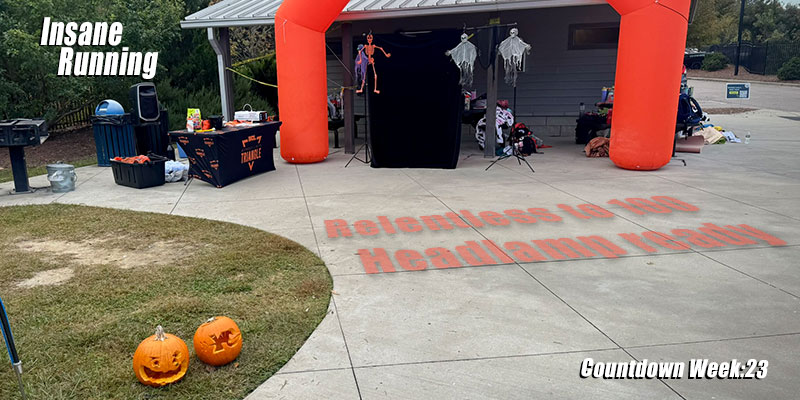Relentless to 100: Week 23
With this coming weekend being the City of Oak Marathon, this week will continue taper week. My left knee is improving every day. I felt it during the Bull City Run Fest half last week, but nothing that was going to change my form. Some days are better than others this week, just bugging me late in the afternoon when I feel it going to go up or down the stairs. But at least now I can go up and down the stairs.
This is part of a series of posts regarding how we prepare, plan, and train to complete the 100 miles Ultramarathon Umstead 100: Relentless to 100. For all the ultrarunning series, here is Relentless to 100, last week’s post, and for additional ideas, follow the link. Training for a 100.
As the days are getting shorter in daylight, it is time to start checking your equipment, routes, and the time you are going to do your run, especially during the weekdays when you probably have working hours and need to figure out if you are doing them early in the morning or late afternoon. Either way, you might start finding your way into the edges of the night.
But this is a great thing since normally longer ultramarathons and other events will have you running at one point or another during some dark portions of the day. Most likely, you will need to use some sort of light to keep you safe during your run.
Assessment:
This will be easy homework for you to do for this week, I promise. Make a list of all the equipment on hand to help you light the way while running. You might find headlamps, handheld lamps, waist, phone, torch or flashlight, watch light, or even something attached to your shoes.
The next thing is to charge those and start paying attention to how long the battery lasts for each one of them. That will start giving you an idea of the current state and whether you need new batteries or new equipment or start giving you an idea of how you are going to start planning the usage and spare game in preparation for the event.
Planning:
For those nighttime or early morning runs. Figure if the light posts along the route are operational. You might add a street or turnaround based on how well the route’s light conditions are. Start practicing using the headlamp (or the device you are going to use). Figure out how easily to turn it on and off. What kind of settings and options do you have available to you as well as the secondary light? Some headlamps might have a red low light option for when you are running low on battery. Practice running using that minimal light mode.
Have that list and get out all the lighting equipment that you might be considering using. Charge them or replace the batteries. Every run, take note of how long you have used the light. To determine how long it can last. That will start giving you an idea of which equipment to use and when or if it needs to be replaced.
| Week 23 | Mon | Tue | Wed | Thur | Fri | Sat | Sun | Total |
| Plan | Stretches & Rolling | 3 | 5 | Rest | 15 | 10 | 33 | |
| Actual | Stretches | 4 | 5 | Stretches | 4 | 16 | 17 | 46 |
Next Week Plan: City of Oaks Marathon
| Week 22 | Mon | Tue | Wed | Thur | Fri | Sat | Sun | Total |
| Plan | Stretches & Rolling | 3 | 5 | 6 | Rest | Rest | 26 | 40 |









